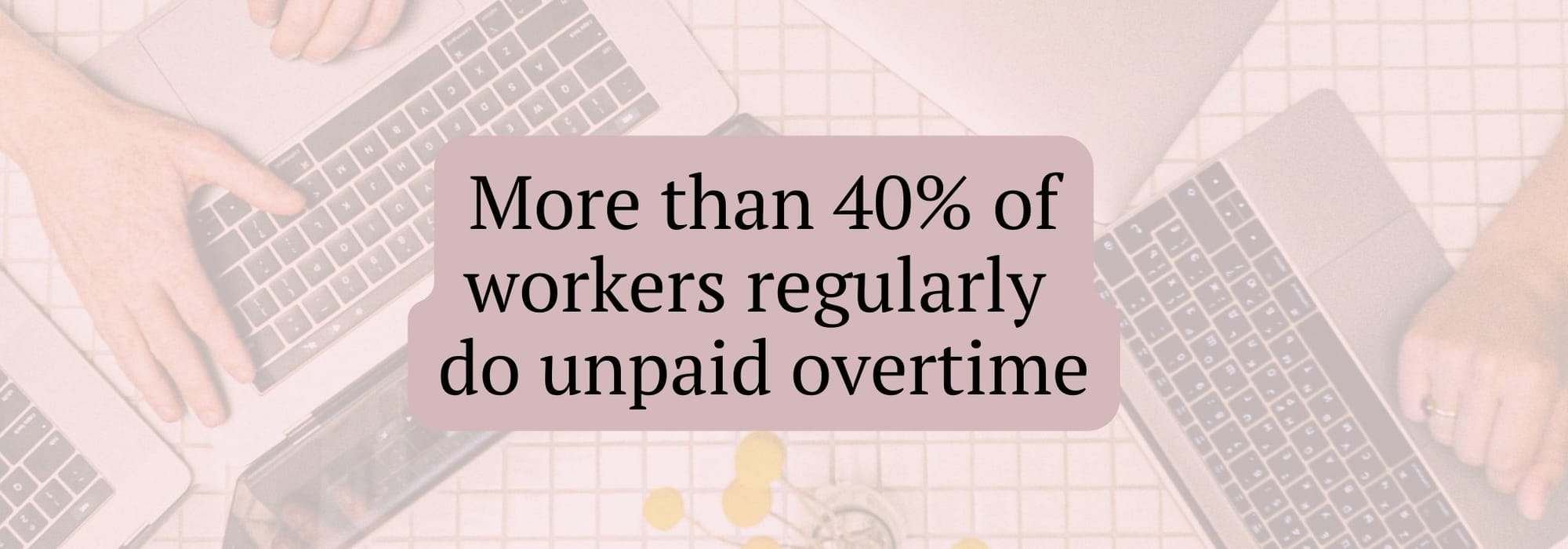Putting a spotlight on the stats to explore the rise in burnout across the UK, and what can be done to help ease the pressure on employees
“I’ve just got to get through this week.” I heard myself say that a lot when my workplace had a staff shortage which lasted a year. But as months passed, I found myself constantly exhausted. I had hardly any energy, I was disengaged, pessimistic, and I wasn’t anywhere near as efficient as I knew I could be. Sick days were common, as was irritability, and binge-drinking. Now, I can see I had a textbook case of occupational burnout.
What is occupational burnout?
The World Health Organization (WHO) recognises burnout as a syndrome “resulting from chronic workplace stress that has not been successfully managed”. Symptoms of this can include a lack of energy or exhaustion, feeling distanced from your role or cynical about it, and reduced professional efficacy.
An important distinction is that, according to WHO, burnout occurs in the workplace, and doesn’t describe experiences in other areas of life. However, even WHO recognises that, naturally, stresses in one area of our life can spill over and impact another –such as the cost of living crisis – but says burnout stems from the workplace environment. Although it’s categorised as an ‘occupational phenomenon’ rather than a mental illness, it can significantly affect your health and, when left untreated, can have long-term mental health implications.
Burnout is more common than ever
According to the ‘State of the Global Workplace’ report by Gallup, employees are lonely and disengaged, with the result that humanity’s mental health is in rapid decline. It reveals that 62% of employees are considered ‘not engaged’, and 15% ‘actively disengaged’, with the impact of this costing the global economy an estimated $8.9 trillion.
In the first of its kind, ‘The Burnout Report’ by Mental Health UK details the reality and scale of the situation – including that 24% of those surveyed felt ‘unable to manage stress and pressure in the workplace’, and 20% had to take time off as a result of poor mental health caused by stress in the past year. Brian Dow, the chief executive, recognises “growing evidence that the UK is grappling with high levels of work absence, and its subsequent cost to individuals, employers, and the taxpayer”.
While these reports may seem daunting, they are also powerful – prompting important conversations and driving meaningful change in workplaces across the UK and beyond.
How work culture breeds burnout
Modern work culture has blurred the lines between professional and personal life. Natalie Englander, senior CBT therapist and perfectionism expert, points out that “constant connectivity, especially if your occupation involves social media use”, creates pressure to always be available.
The cultural glorification of ‘grind culture’ has led many to equate productivity with self-worth. Social media can amplify feelings of inadequacy, leading to perfectionist behaviours, and relentless striving for success at the cost of wellbeing. However, there’s a growing recognition that this mindset is unsustainable, and often counterproductive.

Societal and economic factors
Meanwhile, the rising cost of living means that people are forced to sacrifice downtime to stay afloat. Whether it’s taking an evening job as a delivery driver, starting a side hustle, or working longer hours to maintain job security, Brits are struggling with the elusive idea of work-life balance. According to ‘The Burnout Report’, more than 40% of workers regularly do unpaid overtime, with women more likely to have an increased workload or volume of unpaid tasks.
While burnout can affect anyone, Natalie says that some groups are especially vulnerable. “There needs to be more support for those with caregiving responsibilities, like parents, and especially mothers, who are often at risk of burnout from societal pressure to give 100% in both roles as an employee and mother.”
The harsh truth is that employers need, and are sometimes biased towards, staff who can work long hours and maintain consistent productivity. This means that people with diverse needs, obstacles, and capacities (e.g. people of colour, neurodivergent individuals, and people with disabilities) are at a disadvantage in a system that isn’t designed to support them.
I spoke to Chloe*, an NHS worker who experienced discrimination as a result of her disability. After a period of burnout, she made a reasonable adjustment request for an additional work-from-home day. “My team complained about how unfair this was and, even now, I have to give up my second day when we are short-staffed,” says Chloe.
“Management views my adjustment as a perk, leaving me to feel I have to work harder and be seen as more helpful than other staff to demonstrate I ‘deserve’ my adjustment.”
Chloe’s experience reflects a widespread issue highlighted in ‘The Burnout Report’ – that certain factors significantly increase the risk of burnout, including living in economically disadvantaged areas, belonging to the working class, or being employed in high-pressure industries, such as manufacturing or retail.
What needs to change
Workplace culture is often a contributor to burnout, which means there must be clear pathways for workers to report things like bullying and discrimination. Similarly, the lack of resources and heavy workloads can’t be solved with a meditation app or yoga class. Organisations must take employee wellbeing seriously to spot the signs of high stress, and, in turn, treat and prevent occupational burnout.
Mental Health UK recommends that employers regularly review strategies for mental health, focusing on both prevention and treatment of chronic stress and burnout. Many companies are now equipping managers to support colleagues, and offering mental health training to all staff. Senior staff can lead by example, promoting healthy behaviours to shift company culture. Additionally, there’s a growing emphasis on individualised approaches to burnout prevention, recognising the diverse needs of employees.

Innovative solutions
Some organisations are exploring reduced working hours, with promising results. A UK pilot of the four-day work week, involving 61 companies and around 2,900 workers, showed that 39% of employees were less stressed, and 71% had reduced levels of burnout at the end of the trial. Mental and physical health improved, while anxiety, fatigue, and sleep issues decreased.
Several countries have embraced the ‘right to disconnect’, which prevents employees from being contacted out of hours except in exceptional circumstances. France made it a law in 2017, while other countries like Spain, Portugal, Belgium, and Australia have adopted similar guidelines. The Labour Party in the UK had promised to do the same, but have since delayed implementation.
Moving forward
It’s crucial to remember that burnout, even though it might feel like a personal failing, is not your fault. It’s a result of various factors, including rising costs, unpaid overtime, dwindling resources, and blurred lines between work and home. However, the growing awareness of burnout has the potential to create more sustainable, mentally healthy work environments.
You can contribute to this positive change by setting clear boundaries between work and personal time, practising self-care, and prioritising your mental health when you can. Communicate your needs, making sure to follow any policies and procedures laid out by your employer. If you’re in a management role, lead by example, and encourage colleagues to look out and address the symptoms of burnout.
Small changes can make a big difference. By taking care of ourselves and supporting others, we can collectively work towards creating healthier, more productive work environments.
*Note: name has been changed.


Comments